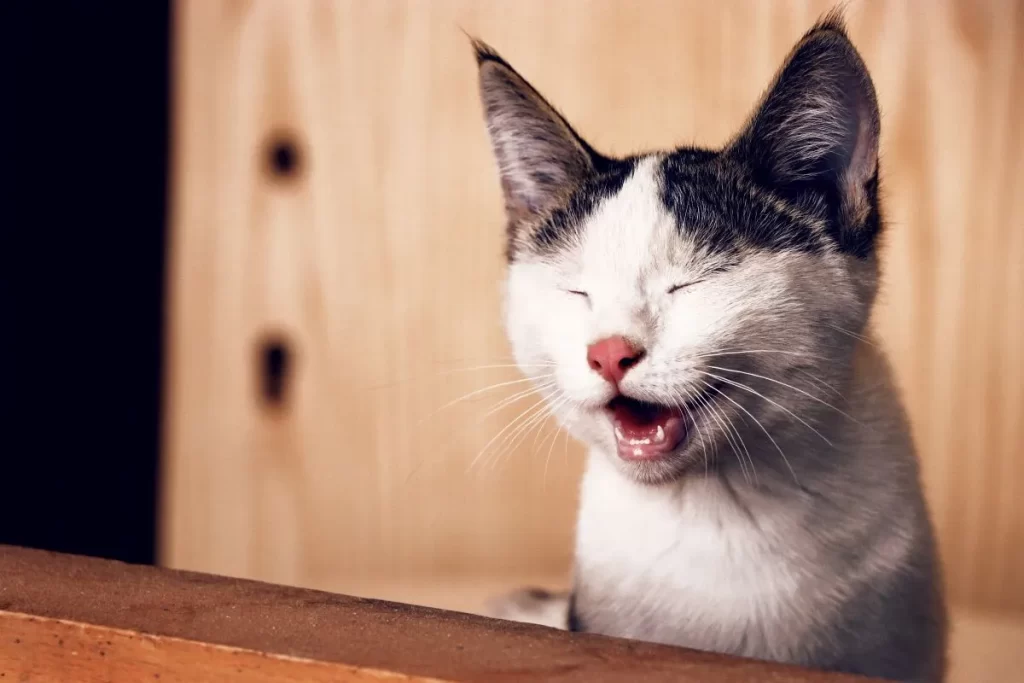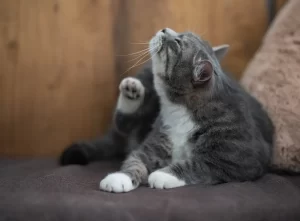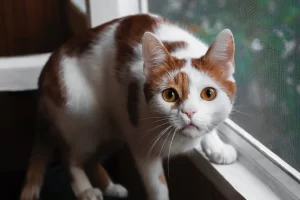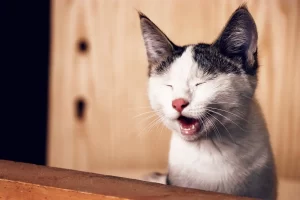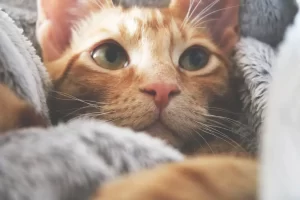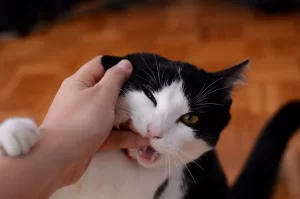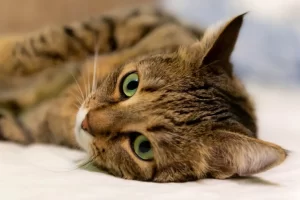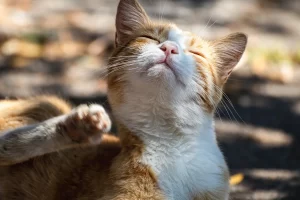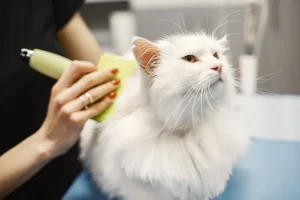Vestibular disease in cats is a neurological condition that affects the vestibular system, which is responsible for maintaining balance and spatial orientation. While there are various factors that can contribute to this disease, including infections and tumors, understanding what toxins cause vestibular disease in cats is crucial for preventing and managing this condition. Toxins can be found in a variety of environmental sources, drugs, and foods, and exposure to these substances can lead to a range of neurological symptoms in cats. In this article, we will explore the different types of toxins that have been linked to vestibular disease in cats, the mechanisms of toxicity, clinical signs of toxicity, diagnosis and testing, treatment and management, and prevention and control measures.
Table of Contents
ToggleOverview of vestibular disease in cats
Vestibular disease in cats is a condition that affects the vestibular system, which is responsible for maintaining balance and spatial orientation. This condition can be caused by a variety of factors, including toxins, infections, trauma, and other underlying health conditions.
The symptoms of vestibular disease in cats can vary depending on the underlying cause and severity of the condition. Common symptoms can include a loss of balance, difficulty standing or walking, head tilting, circling, and rapid eye movements (nystagmus). Cats with vestibular disease may also experience nausea, vomiting, and a lack of appetite.
Diagnosing vestibular disease in cats typically involves a thorough physical examination and a detailed medical history. The veterinarian may also perform additional tests, such as blood work, imaging studies (such as an MRI or CT scan), and a neurological exam to evaluate the cat’s reflexes, muscle tone, and coordination.
The diagnosis of vestibular disease in cats can be challenging, as the symptoms can be similar to other neurological conditions. However, the presence of characteristic signs such as rapid eye movements and a head tilt can help to differentiate vestibular disease from other conditions.

What Toxins Cause Vestibular Disease in Cats
Vestibular disease in cats can be caused by a variety of toxins. The following is a comprehensive list of known toxins that can cause vestibular disease in cats:
- Organophosphates and carbamates: These are commonly found in insecticides and can cause vestibular signs if ingested by cats.
- Aminoglycoside antibiotics: Some antibiotics like gentamicin can have vestibular side effects in cats, especially if given in high doses.
- Heavy metals: Lead, mercury, and other heavy metals can cause vestibular disease in cats if ingested or absorbed through the skin.
- Ethylene glycol: This is a toxic substance found in antifreeze, and can cause neurological symptoms in cats, including vestibular signs.
- Botulism: This is a rare condition caused by the bacterium Clostridium botulinum, which can produce a toxin that affects the nervous system, including the vestibular system.
- Thiamine deficiency: A lack of thiamine in a cat’s diet can lead to vestibular disease and other neurological problems.
- Middle ear infection: Inflammation or infection of the middle ear can lead to vestibular disease in cats.
- Idiopathic vestibular syndrome: This is a condition in which the cause of vestibular signs in cats is unknown. It is typically a temporary condition that resolves on its own within a few days to a couple of weeks.
- Trauma: Head trauma or other types of injury to the head can cause vestibular disease in cats.
- Tumors: In rare cases, tumors in the brain or ear can cause vestibular signs in cats.
- Insecticides and Pesticides: Exposure to insecticides and pesticides can cause vestibular disease in cats. These toxins are commonly found in flea and tick products, insect repellents, and rat poisons.
- Cleaning Products: Certain cleaning products, such as those containing bleach or ammonia, can be toxic to cats and may cause vestibular disease.
- Chemotherapy drugs: Certain chemotherapy drugs, such as cisplatin and carboplatin, can cause damage to the inner ear and lead to vestibular disease.
- Nonsteroidal anti-inflammatory drugs (NSAIDs): Some NSAIDs, such as aspirin and ibuprofen, can be toxic to cats and may cause vestibular disease.
- Plants: Several plants are toxic to cats and can cause vestibular disease. These include lilies, azaleas, and sago palms.
- Foods: Certain foods can be toxic to cats and may cause vestibular disease. These include chocolate, onions, garlic, and grapes.
It is important for cat owners to be aware of these toxins and take steps to prevent their cats from being exposed to them. If a cat shows signs of vestibular disease, it is important to seek veterinary care immediately to determine the underlying cause and begin appropriate treatment.
Understanding the Mechanisms: How Toxins Cause Vestibular Disease in Cats
Each of the toxins identified as potential causes of vestibular disease in cats can affect different mechanisms in the body, leading to the development of the condition.
Organophosphates and carbamates are commonly found in insecticides and work by inhibiting the activity of acetylcholinesterase, an enzyme that breaks down acetylcholine in the body. This can result in an accumulation of acetylcholine, leading to overstimulation of the nervous system and subsequent neurological symptoms, including vestibular disease.
Aminoglycoside antibiotics like gentamicin and neomycin are known to be toxic to the inner ear. They can damage the hair cells in the cochlea, which are responsible for detecting sound waves and converting them into electrical signals that the brain can interpret. The damage caused by these antibiotics can result in vestibular dysfunction, as well as hearing loss.
Heavy metals such as lead, mercury, and arsenic can affect multiple cellular mechanisms, leading to a wide range of symptoms, including vestibular disease. These metals can bind to proteins and enzymes, inhibiting their function and disrupting cellular processes. They can also cause oxidative damage, leading to inflammation and cell death.
Ethylene glycol, found in antifreeze, can cause neurological symptoms in cats, including vestibular signs. It is metabolized in the liver to glycolic acid and oxalic acid, which can cause damage to multiple organ systems, including the nervous system. The exact mechanisms by which ethylene glycol causes vestibular disease are not fully understood, but it is thought to involve disruption of neurotransmitter pathways in the brain.
Botulinum toxin produced by the bacterium Clostridium botulinum can affect the transmission of nerve impulses to muscles and glands, leading to paralysis. The toxin can also affect the vestibular system, leading to dizziness and other neurological symptoms.
Thiamine deficiency can cause multiple neurological symptoms, including vestibular disease. Thiamine is essential for energy production in the body, and a deficiency can result in impaired cellular metabolism and damage to the nervous system.
Certain chemotherapy drugs, such as cisplatin and carboplatin, can cause damage to the inner ear and lead to vestibular dysfunction. The exact mechanisms by which these drugs cause vestibular disease are not fully understood, but they are thought to involve disruption of the cellular mechanisms that maintain the proper function of the hair cells in the cochlea.
Plants and foods that are toxic to cats can cause vestibular disease through various mechanisms. For example, some plants contain compounds that are toxic to the nervous system, while others can cause gastrointestinal upset, leading to dehydration and electrolyte imbalances that can affect the vestibular system. Certain foods, such as chocolate and grapes, contain compounds that can be toxic to cats and can cause neurological symptoms, including vestibular disease.
Signs and Symptoms of Vestibular Disease Caused by Toxins in Cats
Each toxin that causes vestibular disease in cats may produce different clinical signs and symptoms, which can vary in severity and duration. Some of the common clinical signs associated with vestibular disease caused by different toxins include:
- Organophosphates and carbamates: These toxins can cause salivation, diarrhea, tremors, weakness, and seizures (read more about seizures and how they can be treated at home here), as well as vestibular signs such as head tilt, nystagmus, and ataxia.
- Aminoglycoside antibiotics: High doses of these antibiotics can cause ototoxicity, which is damage to the inner ear that can lead to vestibular signs such as head tilt, nystagmus, and loss of balance.
- Heavy metals: These toxins can cause gastrointestinal symptoms such as vomiting and diarrhea, as well as neurological symptoms including seizures, weakness, and vestibular signs such as head tilt, nystagmus, and ataxia.
- Ethylene glycol: This toxin can cause vomiting, lethargy, and dehydration, as well as neurological symptoms including seizures, ataxia, and vestibular signs such as head tilt and nystagmus.
- Botulism: Cats with botulism may exhibit a range of clinical signs including weakness, paralysis, and difficulty swallowing, as well as vestibular signs such as head tilt and nystagmus.
- Thiamine deficiency: Cats with thiamine deficiency may show gastrointestinal symptoms such as vomiting and diarrhea, as well as neurological symptoms including seizures, weakness, and vestibular signs such as head tilt, nystagmus, and ataxia.
- Middle ear infection: Cats with middle ear infections may show vestibular signs such as head tilt, nystagmus, and loss of balance, as well as other symptoms including ear pain, discharge, and inflammation. A cat ear infection may be addressed at home using natural remedies.
- Idiopathic vestibular syndrome: Cats with idiopathic vestibular syndrome may show vestibular signs such as head tilt, nystagmus, and loss of balance, as well as other symptoms including lethargy, anorexia, and disorientation.
- Trauma: Cats with head trauma may show vestibular signs such as head tilt, nystagmus, and loss of balance, as well as other symptoms including seizures, altered mental status, and loss of consciousness.
- Tumors: Cats with brain or ear tumors may show vestibular signs such as head tilt, nystagmus, and loss of balance, as well as other symptoms including seizures, changes in behavior, and altered mental status.
Diagnostic Methods for Identifying Toxin-Induced Vestibular Disease in Cats
Diagnosing vestibular disease caused by toxins in cats can be a complex process, as the clinical signs can mimic those of other diseases or conditions. However, there are several methods that can be used to determine the underlying cause of vestibular disease in cats, including laboratory tests, physical examination, and imaging studies.
First, the veterinarian will perform a complete physical examination of the cat, including a neurological examination to assess the function of the vestibular system. They will observe the cat’s posture, gait, and balance, and check for signs of nystagmus (involuntary eye movements) or head tilt. They may also evaluate the cat’s hearing and assess for any signs of pain or discomfort.
Laboratory tests can also be helpful in diagnosing vestibular disease caused by toxins. Blood tests can be used to check for abnormalities in the cat’s liver or kidney function, as well as to assess for the presence of certain toxins, such as ethylene glycol. Urine tests can also be used to check for the presence of toxins or to assess kidney function.
Imaging studies, such as X-rays, computed tomography (CT) scans, or magnetic resonance imaging (MRI), may also be used to help diagnose vestibular disease caused by toxins. These imaging techniques can provide detailed images of the brain and inner ear, allowing the veterinarian to assess for abnormalities such as tumors or inflammation.
In some cases, a biopsy of the affected tissue may be necessary to definitively diagnose vestibular disease caused by toxins. However, this is a more invasive procedure and is generally only performed when other diagnostic methods have been inconclusive.
Toxic Vestibular Disease Treatment
The treatment of vestibular disease in cats caused by toxins depends on the specific toxin involved and the severity of the symptoms. In general, treatment aims to address the underlying cause of the condition and manage the symptoms.
Supportive care is often the first step in treatment and may involve hospitalization with intravenous fluids and medications to manage nausea and vomiting. If the cat is not eating, a feeding tube may be necessary to provide nutrition (these treatments for cat vomiting and not eating may also be helpful). Check out the full list of home remedies and treatments to treat a cat with vestibular disease.
Antidotes may be available for certain toxins, such as ethylene glycol or organophosphate toxicity. These antidotes work by binding to the toxic substance and preventing it from causing further harm.
Drug therapy may also be used to manage the symptoms of vestibular disease. This may include medications to manage nausea and vomiting, such as maropitant or ondansetron. Anti-inflammatory drugs such as corticosteroids may also be used to reduce inflammation in the inner ear.
In some cases, surgery may be necessary to remove a tumor or correct a structural abnormality in the ear.
Recovery from vestibular disease caused by toxins can vary depending on the specific toxin involved and the severity of the symptoms. Some cats may recover completely, while others may have permanent neurological damage.
Preventing and Managing Toxins that Cause Vestibular Disease in Cats
Preventing cats from being exposed to toxins that can cause vestibular disease is crucial in avoiding the disease in the first place. Here are some measures that can be taken to prevent exposure:
- Environmental toxins: Limiting a cat’s exposure to environmental toxins can be achieved by keeping them indoors, away from contaminated areas, and monitoring their outdoor activities. Removing or securely storing hazardous materials, such as cleaning products, insecticides, and antifreeze, can also help prevent accidental exposure.
- Medications: It is important to follow the veterinarian’s instructions and never give a cat medication intended for humans unless specifically instructed to do so. Additionally, keeping medications out of reach of cats and storing them properly can help avoid accidental ingestion.
- Foods and plants: Being aware of the foods and plants that are toxic to cats and keeping them out of reach can help prevent accidental ingestion. This includes foods such as chocolate, onions, and grapes, as well as plants such as lilies and sago palms.
- Regular veterinary check-ups: Regular check-ups with a veterinarian can help detect any underlying health issues that may make a cat more susceptible to vestibular disease caused by toxins. Read more on How often should I take my cat to the vet?

